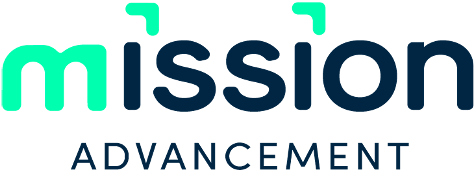 As a career consultant who has worked with countless nonprofits, I spend most of my time focusing on the top of each client’s donor portfolio – the largest gifts. Helping a development staff, Board and executive leadership establish a sound, relationship-based principal gifts strategy provides the greatest short-term gain, as well as long-term revenue retention. But where does long-term growth come from? The answer or "secret sauce" to a thriving and growing development operation is a strategic mid-level donor strategy.
As a career consultant who has worked with countless nonprofits, I spend most of my time focusing on the top of each client’s donor portfolio – the largest gifts. Helping a development staff, Board and executive leadership establish a sound, relationship-based principal gifts strategy provides the greatest short-term gain, as well as long-term revenue retention. But where does long-term growth come from? The answer or "secret sauce" to a thriving and growing development operation is a strategic mid-level donor strategy.
For most small- to medium-sized nonprofits, the monthly (sometimes daily) challenge is to raise enough money to keep the door open and the mission alive. It is truly a discipline to take the time to plan strategically for the future and have the patience to wait for the results of your efforts. Investing today when we may not see the return for a few years goes against our fast-paced “I want it now” culture. For those of you who are parents, this probably sounds familiar. Nowhere does this principle apply more than in parenting. As a father of four kids, I consistently attempt to impart my wisdom to them about the foreign concept of delayed gratification.
For a nonprofit, the real questions that must be answered are:
Where will our next 25 to 50 major donors come from?
How does a smaller donor grow into a major donor?
How can we prepare for the day when our current top donors are gone or unable to continue funding the mission by themselves?
The answer: build a solid mid-level donor strategy!
So let's start by defining what a mid-level donor strategy is. My definition will surprise you because it has little to do with the amount donors give and everything to do with the manner in which they are engaged by the organization. A solid mid-level strategy is about transitioning the donor from a transactional means of giving (typically events and direct mail) to a relationship-based form of giving. In short, a mid-level donor strategy should be about transitioning a donor's relationship from the mailbox to a person.
A vital resource necessary to establish a good mid-level donor strategy is the person who will be the champion and ambassador for a mid-level donor portfolio. Ideally, this is a full-time member of the development staff. In a small nonprofit, this person may be a part-timer, board member or volunteer. Regardless, it is the role and responsibility of this person to personally relate to the mid-level segment of donors.

Relating to the mid-level donors can take many forms, as long as it involves personal interaction. Personal interaction means phone conversations or small group meetings. It does not include emails, tweets, or voice messages. Remember, the aim is to establish a personal relationship – not simply raise money. The primary goal is to engage donors who have given through mass-marketing efforts and, over time, promote those donors to the major and principal gifts portfolio. This implies that the donor is now ready for a face-to-face, personal relationship plan.
For those of you who have attended our workshops or webinars, you have probably heard me walk through the relationship pyramid as an illustration of a sound development strategy. But the relationship pyramid is also an accurate picture of relationships in our personal lives. At the bottom of the pyramid are all of the people we know – perhaps our Facebook friends or holiday card list. At the top of the pyramid are our best friends in the world – the two or three people in whom we invest the most.
We meet new people every day and add them to our personal portfolio of friends and acquaintances. Some of those we meet move into deeper relationship with us. A few make it to the top. The point of the illustration is that there is a path for some of the people we meet to move into deeper relationship with us. So, too, should be the case for a new donor who gives through your mass marketing efforts. It is the mid-level donor strategy (the secret sauce in the middle) that connects the more impersonal transactional fundraising to the personal, transformational fundraising.
So, take some time to think about the broader long-term strategy of your development efforts. Invest today in a mid-level strategy and watch how your major gifts efforts benefit in the years ahead.


 MISSION ADVANCEMENT
MISSION ADVANCEMENT



